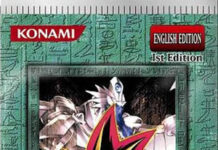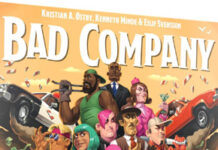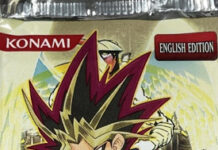As I kept tripping over myself while trying to squeeze it into my CotDs, I realized I needed a separate article to explain the TCG’s latest foray into “Shiny” or “Shining” Pokémon. This is simplest the latest TCG adaptation of a video game mechanic some may not even know exists: “Shiny” Pokémon. There, Shiny Pokémon are simply alternate color versions of Pokémon; actually, it can be much more complicated than that, but that is beyond the scope of the article. Just know that to obtain a Shiny Pokémon in the video games is usually a matter of luck; they must be caught or hatched or traded for and the rate of natural occurrence is quite, quite low.
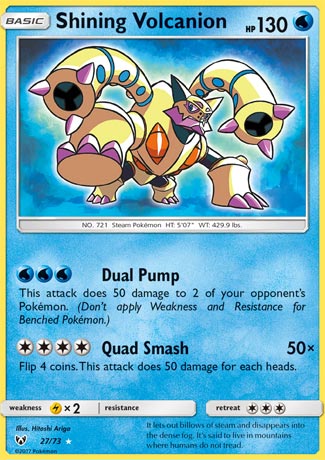
The Shining Pokémon introduced in Shining Legends are the fifth or sixth iteration of these alternate color Pokémon in the TCG, and they aren’t even the first to bear that name.
We will begin with the latest attempt, the Shining Pokémon released in Shining Legends. The artwork uses the alternate colors for the Pokémon in question, though that doesn’t affect game mechanics. What does matter is that the Pokémon has “Shining” as the first part of its name, so it does not count against the 4 Copy Rule with respect to any other versions of it. For example, you could include up to four cards named Jirachi alongside up to four cards named Shining Jirachi, just like you could include up to four cards named Jirachi-EX along either or both of them! This goes for other game mechanics and card effects. So far, only Basic, Legendary Pokémon have been released as this kind of Shining Pokémon.
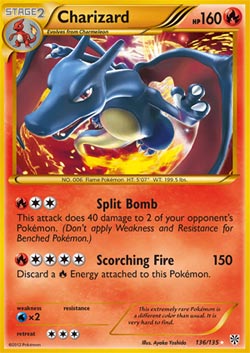
Still part of the Standard and Expanded card pools is the next most recent adaptation; Secret Rare versions of Pokémon have used the “Shiny” color scheme throughout the Black & White-era and XY-era releases. I am uncertain as to whether to treat it as a separate thing or not, but some subseries within larger expansions during the Diamond & Pearl-era, Platinum-era, as well as Call of Legends (the oddball set released at the end of the HeartGold/SoulSilver-era). These cards carry no special game mechanics, and most (maybe all) are just reprints of regular cards but using the Shiny coloration in the card art. I somewhat miss this, as it was much, much simpler to explain (or didn’t need explaining at all!).
![Jolteon * [Star]](https://www.pojo.com/wp-content/uploads/2017/10/PK_101_p.jpg)
Before these, we had the difficult to write Pokémon [Star]. They were also referred to as Pokémon* (don’t look for a footnote for the asterisk as it is part of the name) or Shiny Pokémon (the same as the video games). Being a Pokémon [Star] carried the same naming-related rules as for the current Shining Pokémon, as “[Star]” is part of the card name. They each also had the “Shiny Rule” printed on them, which stated your deck could contain only one Pokémon [Star], much like how Ace Spec cards have the Ace Spec Rule which states a deck may contain only one Ace Spec. Though not every Pokémon received a Pokémon [Star] counterpart, there seemed to be no real criteria about what could receive the treatment. All Pokémon [Star] were released as Basic Pokémon, even if they would have normally been an Evolution; this is much like how all Pokémon-EX other than Mega Evolutions are Basic Pokémon. Pokémon [Star] were introduced in EX: Team Rocket Returns and stopped with the end of this TCG generation (approximately EX: Power Keepers).
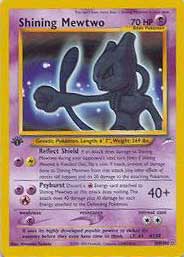
At last, we come to the first attempt to introduce the video game Shiny Pokémon to the TCG: Shining Pokémon. No, that isn’t a typo; once again, the powers-that-be have recycled a name. Unlike with Pokémon-ex versus Pokémon-EX, there is nothing to help you easily distinguish the two by name alone. In fact, for card effects and game mechanics, as far as I know, the two are considered the same. You can tell them apart pretty easily if you can see the actual cards. For starters, the original Shining Pokémon released in Neo Revelation and Neo Destiny. Their attacks usually feature unusual Energy Types, at least for that particular Pokémon. As an example, Shining Mewtwo needs [PL] for its first attack and [PPR] for its second. The big thing, and it can be easy to overlook, is the “Shining Rule” at the top of the card, which stated you could only run one copy of a particular Shining Pokémon. This is more generous than the Shiny or Ace Spec rules, but still a significant restriction. The original Shining Pokémon are also all Basic Pokémon, even if they represent something which is normally an Evolution, such as with Shining Raichu.
Finally, let me warn you about some cards that can make things a little more complicated. First, for each of the above, there are some promos; seemed easier to mention here than to state it each time for each Shiny TCG mechanic variation. Next, there are some mechanics that might be mistaken as Shinies, but aren’t: Crystal Pokémon, Pokémon δ, and simply coloring errors or decisions.
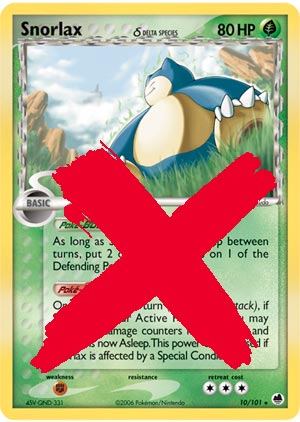 |
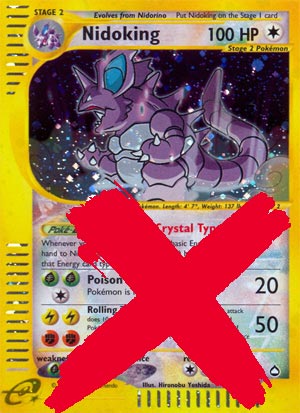 |

